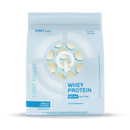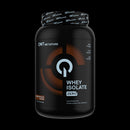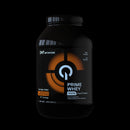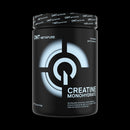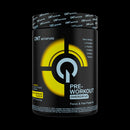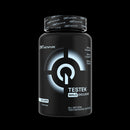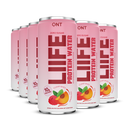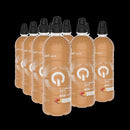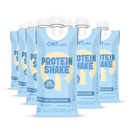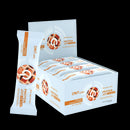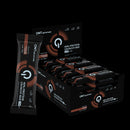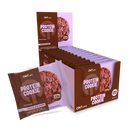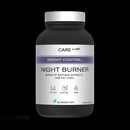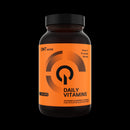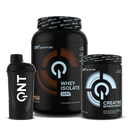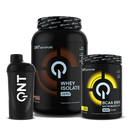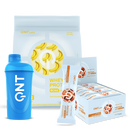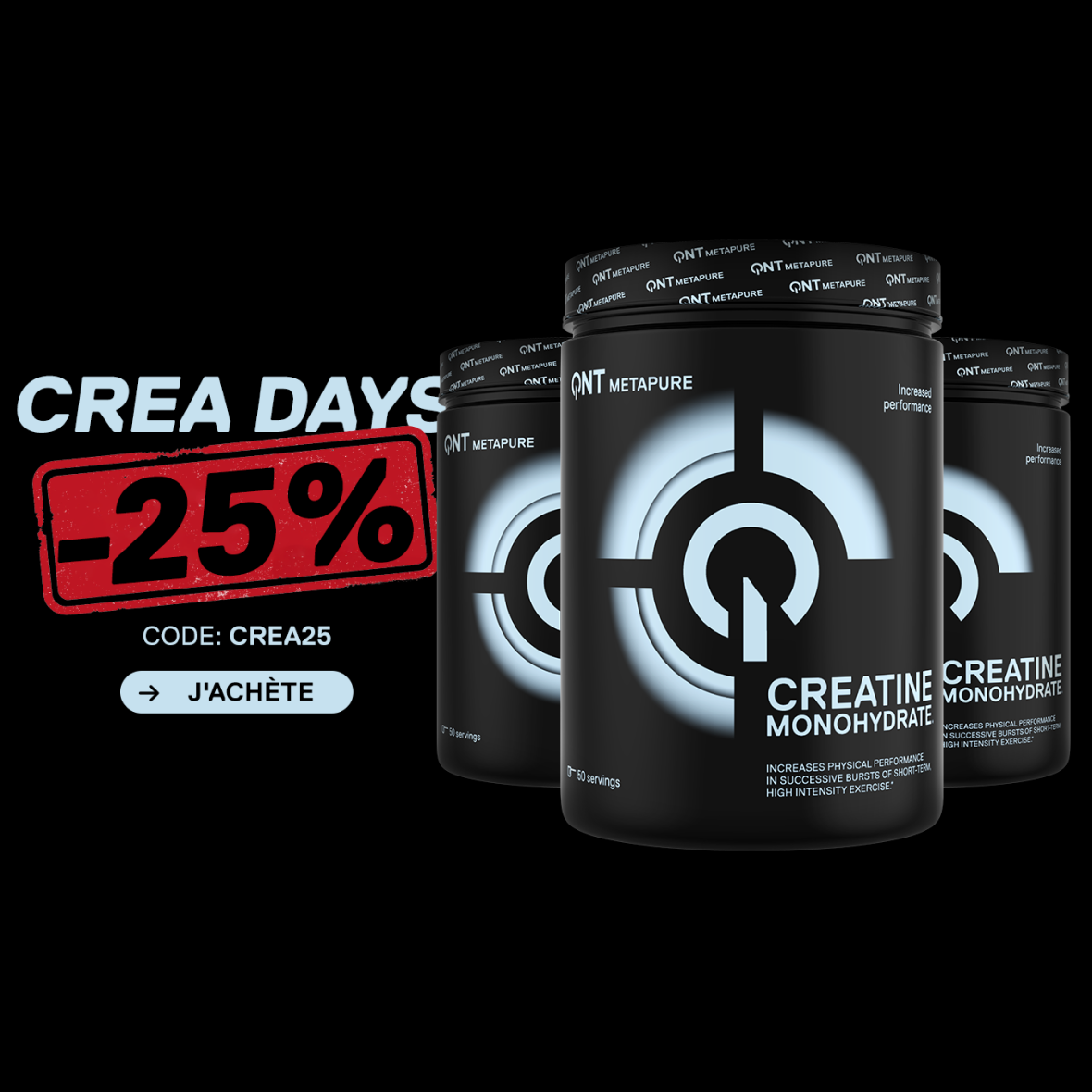Table of Contents
For each skill, we have, of course, a different genetic heritage. We are not equal in any of these areas from the start, but our learning capacity also varies from person to person. Moreover, it will depend on so many factors that can either foster or hinder it: The social environment, stress, and the ability to resist it, etc…
Therefore, we will need to try to manage the elements we can control. For the others, we will have to make do with what each of us has. In other words, some will have to train much more than others for sometimes lesser results.
Before starting this chapter on performance improvement, it is first necessary to distinguish the different paths one can take.
Indeed, one can excel in one area and be very poor in another.
So, in which areas can we increase our performance?
- Endurance is the ability to sustain an effort of a given relative intensity for an extended period.
- Resilience is the physical capacity that allows us to endure a medium to high-intensity effort for as long as possible.
- Muscular strength is defined as the ability of muscles to contract intensely to move a load or resist resistance.
- Flexibility is defined as the body's ability to perform a movement with a wide range of motion.
- Coordination is the ability of the body to perform a movement through the simultaneous and harmonious action of the nervous system and the relevant skeletal muscles (cf. Jean Ferre and Philippe Leroux).
Improving Performance: Basic Concept.
What performance?
If we each have different abilities, we cannot improve our genetics in the current state of science.
However, our performance in all areas is the result of our habits: sports, of course, but also dietary, social... etc.
Let's focus on what appears to be the most achievable within the scope of this article: Sports and dietary performance.
Other habits offer so many different perspectives and individual cases that it seems like a task too large to be summarized here. However, if you have more personal questions, feel free to get in touch, and we will advise you on a case-by-case basis.
The human body has an astonishing ability to adapt. One thing is certain, in any performance domain, if you want to enhance your abilities, you must push yourself. You must compel your body to adapt to new habits, all without injuring yourself.
Therefore, it will be necessary to increase the workload of the muscle so that the body adapts and becomes more proficient in the chosen domain.
Be aware that some physical abilities can be antagonistic: a strength athlete will generally perform less well in long-distance running, and a marathon runner may lack strength in the bench press. Does this mean that the marathon runner cannot improve their strength or that the strength athlete cannot improve their endurance? It's possible that the 2 kg of muscle the marathon runner gains from strength training might cost them a few seconds or minutes compared to their record. It's possible that the strength athlete's endurance training might take away some of their neural drive?
It is therefore important to know exactly what one wants and to be aware of the consequences of one's efforts when reaching a high level of performance.
For a beginner, on the other hand, it is advisable to start with a comprehensive training program because they are not yet specialized in a particular sport and not bound by competition-related obligations.
Endurance.
The first thing to develop is endurance. Endurance will increase the volume of your heart. This is why endurance athletes often have a low heart rate, as the heart doesn't need to beat frequently to deliver blood to the tissues due to its large volume.
Flexibility.
Flexibility is the ability to perform movements with a wide range of motion. It's a quality to develop as early as possible because young children are flexible and become less so as they grow older. It's mainly the lack of maintenance that leads to the loss of this elasticity and can make us stiff and more vulnerable.
The resistance.
Then, resilience will allow the heart to strengthen. That's why it's better to first develop endurance to increase the size of the heart. A strong heart that has to beat faster to pump the same volume will tire and wear out faster. The ideal is to have a large and muscular heart that can pump a large volume of blood rapidly. But strengthening a small heart can also hinder its expansion later on. Therefore, starting with endurance is preferable.
Coordination.
Coordination is also a quality to develop from a very young age. There are psychomotor courses for children that can prepare them for early sports education and potentially lead to a more specific discipline. If coordination is not trained, it can also deteriorate over the years.
Strength.
Muscular strength will truly develop during adolescence due to a higher testosterone level in males. However, many misconceptions persist regarding strength training for children. Most of the time, strength training is prohibited for children. Is this right? Strength training movements are not toxic for children, no more than gymnastics or athletics. Yet, this sport is often criticized when it comes to children. It's important to distinguish between doing strength training with the goal of increasing muscle volume and strength, or simply making progress on machines and bars. The forces exerted on a child's body during high jumps, on parallel bars, or when performing a volleyball smash are likely greater than when they do their best on the bench press. So, it's not strength training that is bad for a child, but rather how it is approached at their age. Of course, it requires a knowledgeable person to supervise and guide them, as in any sport. Obviously, few children continue with strength training because the visual results do not match their efforts. Furthermore, there is no playful element in strength training, which is not a motivating factor for the youngest. Their visual development, which is often the primary motivation, will only come during adolescence. Therefore, it is rare to see a child regularly continue with strength training before adolescence.
The various qualities of a muscle are often so different from each other, yet complementary and sometimes antagonistic, that it is very difficult to excel in all of them.
One will have to choose a quality to develop more than others and progress it until it reaches a plateau. Once it stagnates, one can move on to another, hoping that the work done on the first quality does not fade over time.
Fortunately, our muscles have memory! What you have trained once, if the performance and results have faded due to lack of practice, will come back faster and more easily when you resume training.
Whether it's strength, flexibility, endurance, resilience, or coordination.
You can periodize and vary your training to hope to increase all your muscle capabilities. Sometimes, regular reinforcement can prevent a muscle quality from diminishing too much.
Training program.
Let's try to provide some advice for each muscle quality here.
Of course, everyone already has a well-defined level of performance, and what is true for a beginner may not be the case if you have an advanced level.
Flexibility.
The most flexible athletes are classical dancers and gymnasts.
How do they train their flexibility?
- They perform static stretching: In other words, they hold a position where they try to stay and stretch their muscles to the maximum.
- They perform exercises with the widest range of motion: If you perform movements halfway, you limit the movement before its full execution, which stresses the neuromuscular spindle and stiffens the muscle. This also exposes it to injuries more quickly.
- They do dynamic stretches: This forces the muscle to contract and relax, allowing it to maintain elasticity throughout the length of the movement.
- Stretching with external assistance is also a good way to increase flexibility. This type of stretching is often done with a partner.
- They stretch before, during, and after training.
There have always been frictions between different proponents of each approach to flexibility training. Currently, no scientific study has been able to assert that one method is better than another for a specific population or a particular sport.
If you feel stiff and want to work on your flexibility, don't hesitate to do as dancers do: whenever you have a bit of time during your training, between exercises, work on your flexibility.
Benefits of good flexibility.
No matter what sport you are in, if you are injured, you will not progress, and your performance will not improve.
Improved flexibility will help you avoid certain strains and tears.
Most back problems are the result of poor flexibility in the hamstrings. You can prevent significant back pain by doing some stretches every day and improving the elasticity of the muscles at the back of your thigh.
Working on your flexibility is also a factor that benefits muscle recovery. Studies have also shown that flexibility stimulates muscle growth.
Antagonism.
If you develop a significant muscle volume, the flexibility of your joints can be limited by the mass of your muscle. When you have a very large bicep,
Muscle strength.
Unlike flexibility, becoming stronger requires proper nutrition. The body needs to receive the energy it requires to achieve high performance.
In physics, F = M x A. Force equals mass times acceleration.
Let's try to adapt this formula to our training.
Muscle mass is important in determining the amount of force we can develop. This seems logical because an athlete weighing 130 kilograms has more strength than an athlete weighing 60 kilograms. This is also why weight categories have been created, and performances increase as one moves up from one category to another.
On the other hand, some of us have been amazed by the relative strength of certain individuals. We've seen lightweight athletes come close to the performances of heavier athletes. How is this possible?
Simply because strength requires recruiting as many muscle fibers as possible with a single neural impulse. If you have a larger muscle but your neural impulse doesn't allow you to recruit more than 30% of your fibers, you won't lift heavier than an athlete with a smaller muscle but who can recruit 60% of their muscle fibers. This brings us to the "A" of the equation. Because the acceleration of a sports movement will be determined by the most powerful neural impulse that allows recruiting the maximum number of fibers in a single movement.
Therefore, one can enhance their strength performance by increasing their muscle mass AND by improving the quality of their neural impulse.
Regarding muscle mass, I refer you to the chapter "guide to gaining muscle."
As for the neural impulse, it's a matter of concentration and preparation that will allow increasing its capacity. Adequate restorative sleep is also necessary. Showing up groggy to a strength training session is likely not going to be helpful.
However, when it comes to strength, it can sometimes be difficult to judge one's performance based on their level of fatigue before training. Sometimes, you'll feel in good shape and be below your best performances, and other times, you'll feel off but beat all your records.
Genetics also plays a significant role in that the basic muscle capacity, the percentage, and the number of white or red fibers depend on it, but the length of the segments and the lever arm of the tendons in relation to the bones is also a factor that will determine an individual's strength.
The resistance.
This is a quality found in many sports such as middle-distance running, gymnastics, CrossFit, cycling, team sports...
If you are resilient, you can perform high-intensity efforts with little rest time and for a certain period. The sprint of a footballer, the ring exercise of a gymnast, the start of a cyclist are particular cases where the heart will beat very hard and the body must recover quickly to be able to perform other intense efforts again.
WARNING! Don't forget to properly work on your endurance before engaging in intense resistance sessions.
How to effectively train endurance?
A good way to achieve good results is through circuit training.
You take about ten exercises, most of which work the entire body or at least the major muscles.
For example: burpees, squats, jump rope, medicine ball against a wall, bench or platform jumps, jumping-jacks... etc.
You decide on a work time and a rest time.
You keep track of all the repetitions you complete during the rest times between exercises, and you perform this workout once a week.
After one week, you will have already made progress. Keep the same circuit for 3 weeks, then increase the difficulty by reducing rest times or increasing work time.
It's very rewarding work because you can make significant progress relatively quickly.
In your sport, you can also work on endurance tailored to the performance you want to increase.
For example, an 800m runner can work on interval training and split their 800m run into 4 sprints of 200m with varying rest times between sprints. The goal is to increase their capacity to endure a higher effort level in their favorite distance.
There are so many different situations in various sports that it's not possible to adapt to all of them here, but the basic principle remains the same: increase your capacity to endure the highest possible effort for the longest possible time.
Endurance.
For improving endurance, longer training sessions are typically required. A marathon runner or a triathlete needs to complete relatively long sessions. However, it's important to note that a beginner and an experienced athlete will have different goals: the beginner aims to reach the distance, while the experienced athlete aims to beat their record in the distance.
The experienced athlete needs to vary distances and training speeds to improve their performance. A marathon runner trains almost every day.
The beginner can start with very short distances once or twice a week.
An example for a true beginner: This training has allowed beginners to run a half-marathon even if they were not runners. It's a once-a-week workout over several months:
The principle is simple: start with 10 minutes of easy running. Use a heart rate monitor, it will also serve as a timer.
For the first time, choose a route. So, you run for 5 minutes in one direction of the route, and then you return.
The following week, increase the time by 10 minutes: run for 10 minutes in one direction, then turn around.
Continue this pattern in the following weeks until you can run for 2 hours, which is a reasonable time for a beginner in a half-marathon.
However, keep in mind that every time you turn around, you can accelerate to arrive before the expected deadline. Your heart rate monitor will help you at some point to control your pace based on your heart rate.
This training is great for true beginners because it only takes place once a week and is very gradual. However, for an experienced athlete, it is far too easy and spaced out.
Everyone should be able to adapt their training according to their needs.
Coordination.
Muscles and the brain are always strongly connected when it comes to movement. In all sports, coordination is crucial. Whether it's for a runner or a gymnast, even though the level of difficulty is completely different, it's your brain that will coordinate all the muscles involved to achieve a smooth movement.
It's true that running may seem easy, yet the brain manages at least twenty muscles to prevent them from interfering with each other. Imagine that when you extend your leg in your stride, your brain orders your hamstrings to contract instead of relax? It would result in an accident with every step. Of course, this movement was learned when we were very young, so there's no need to think about it because this type of motion has been imprinted in such a way that it's entirely automatic and requires no conscious thought.
On the other hand, a double somersault has not been learned and will require special efforts to hope to achieve it one day. Not just anyone can perform it. You must not be too heavy, or you risk breaking your ankles or ligaments sooner or later. It requires a certain level of muscle elasticity, and, of course, a certain amount of training time to accomplish it.
Once you've achieved it, the performed movement will be "stored" in your database of movements and will allow you to perform these new coordinations more and more easily.
Of course, if your body changes, if you gain weight, lose flexibility, the imprinted movement will not be exactly the same, and to continue being able to perform it, you will need to train it regularly with your changing body, or else you might forget how to execute it correctly or even risk injury.
A simple roll that you used to perform easily without even realizing it when you were young may now require concentration because you may have developed some cervical arthritis.
So, if you have a movement that you want to continue performing for a long time, it's important to regularly remind your body and brain that you are capable of executing it.
Performing exercises because of good genetics is not difficult. Improving performance requires thought; "What is my goal?" Based on this goal, a plan can be established and followed to achieve it. Goals may change, but to hope to achieve them, one must step towards them step by step. The bigger they are, the more sacrifices and training they will demand, but to progress, one must push beyond their limits.
Nutritional program.
Of course, each characteristic of the human body may require an adapted physique, and, most importantly, each sport as well.
We rarely see a shot putter below 50 kilograms! Or a gymnast above 100 kilograms.
In various sports, weight categories have appeared sooner or later.
Nevertheless, let's examine if we can find nutritional characteristics specific to each muscle quality.
Flexibility.
There isn't really any bodily contraindication to flexibility except for muscle volume. It could be said that a slender person can be as flexible as a person with excess weight. However, excess muscle or fat mass can sometimes hinder joint movement.
Therefore, it's important not to gain too much muscle or too much fat if you want to improve performance and become more flexible.
However, proper hydration can help maintain muscle elasticity.
Flexibility can be either joint or muscular. For healthy joints, we will see that there are suitable supplements. Regarding muscles, they must stay in good shape, so the protein intake should be sufficient to avoid catabolism.
A supplement that can aid in improving flexibility is collagen. It's a substance that helps maintain good tissue elasticity
Strength.
An diet aimed at boosting strength should include plenty of proteins (up to 3 grams per kilogram of body weight depending on the individual).
Naturally, a significant protein intake requires ample hydration!
Calories should also slightly exceed the basal metabolism. Your body should be in an anabolic state, not a catabolic one.
You can refer to our [guide for gaining muscle](https://www.qntsport.com/fr/blog/post/guide-pour-prendre-du-muscle.html), the nutrition is similar.
Resistance.
Muscular endurance still requires a certain amount of muscle mass, but not excessive, as too much mass can hinder movement. Additionally, the effort in endurance will last for a certain duration.
To provide the body with all the necessary nutrients for improved endurance, it's important to have sufficient intramuscular glycogen. This will allow the muscle to perform medium-intensity efforts for as long as the reserves are present in the muscle.
To increase these glycogen reserves, it's imperative to consume slow-digesting carbohydrates.
On the other hand, if you have a competition and want to temporarily increase your glycogen reserves, it can be beneficial to subject your body to a carbohydrate loading phase 3 days before the competition you're preparing for. Therefore, increase your carbohydrate intake before a competition, and don't forget to hydrate your body well, as the assimilation of 1g of glycogen requires 3g of water.
Endurance.
Endurance is a long-duration effort that would primarily utilize our fat reserves. However, during any endurance competition, it's rarely the fat reserves that are depleted.
Indeed, if the effort was linear, these reserves would likely suffice to meet the body's energy demands. However, during these competitions, the paces vary greatly from one part of the race to another. Accelerations require energy that comes more from glycogen reserves, similar to an endurance effort.
In a competition like a marathon, for example, the changes in pace that a runner can make will depend more on their glycogen reserves than on fat.
It is therefore important to prepare for both endurance and resistance efforts.
Doing 3 days of loading with slow-digesting carbohydrates and water seems like a good tactic to tap into your reserves when you need them and perform at your best.
So, there is no one-size-fits-all diet to improve all performances. Once again, it must be considered within the context of a specific goal and integrated into specific training. However, certain supplements can support particular performances and provide significant assistance in their development. Pre-workout supplements can indeed meet the need for enhanced performance in certain very specific cases.
Dietary supplements and vitamins to take.
In all sports, the muscles are put to the test, they work more than the muscles of a sedentary person. Therefore, they will have to perform more chemical reactions, transport more nutrients, in short, they will require more metabolites.
For all sports, a supplement of vitamins and minerals is not a luxury. It ensures that the body has everything it needs to function properly and without failures. This prevents you from training without making progress.
Proteins.
Let's talk about protein supplements instead, of course. Because while protein is necessary for any athlete to replace the proteins destroyed by exercise, protein supplements are not a must but a convenience. Imagine cooking six times a day to allow your body to progress? No, it's easier to prepare meals in advance and absorb liquid proteins after training because they are assimilated more quickly and therefore arrive faster in the muscles to fill the gaps left by the workout.
All sports also require protein reconstruction, but those that need it the most are sports that require strength, speed, and endurance.
Nevertheless, it is increasingly recognized that endurance sports may also require muscle reconstruction, albeit to a lesser extent, of course.
A liquid protein supplement after each workout can aid in muscle reconstruction in all sports.
Creatine.
Creatine is a supplement that boosts the strength of those who consume it.
Creatine should be taken with a supply of fast-acting carbohydrates and never with caffeine.
Of course, it produces very good results in strength, endurance, or speed sports.
Take 3-month cycles, then stop for 3 months. This will prevent a decrease in your endogenous creatine level.
Caffeine.
Caffeine is often used as a fat burner because it increases heart rate and indirectly body heat, causing our body to consume more calories.
However, its use can be interesting in certain sports because it also has a stimulating effect. It enhances alertness and can boost the nervous system in strength, speed, endurance, or resistance sports where it can stimulate fat mobilization.
However, be careful not to develop a tolerance, as the stimulating effect of caffeine decreases over time.
Collagen.
One could say that collagen is a supplement that anyone could take, whether they are an athlete or not.
It provides elasticity to tissues and allows them to be resilient. It also contributes to the harmony between tissues and organs while promoting tissue regeneration.
It is therefore good for the skin, tendons, muscles...
We could say that sports that require flexibility might need it more, but that would limit its range of action to just one quality.
L-carnitine.
Aside from its use as a fat burner and its positive effect on individuals with heart problems, carnitine can play an interesting role for various types of athletes.
Indeed, it plays an important role in the muscle recovery process during physical exertion. Therefore, it is recommended for endurance or resistance efforts.
It also increases the number of red blood cells, which is a significant advantage for endurance sports.
It can also reduce post-exercise muscle soreness, which can be helpful in many sports as well.
BCAAs.
They will be of great use to you if you are a strength or speed athlete. Although they are involved in most of the cellular processes of muscle protein building, practically, you will have better muscle recovery and especially less pain. This can allow for less spaced training sessions and therefore better progress.
BCAAs can also assist in endurance and resistance sports during more significant muscle challenges.
Beta-alanine.
It's an interesting supplement that enhances tolerance to maximal effort between 30 seconds and 10 minutes. This suggests that resistance sports will be particularly sensitive to beta-alanine supplementation.
It allows for maintaining a more stable pH within the cell and thus enduring the effects of lactic acid longer. It is notably found in Hydravol.
Hormonal boosters.
They are particularly effective in strength or speed sports. In short, anywhere where more masculine than feminine characteristics will be essential.
They will also allow for better recovery.
If you sometimes experience a slight drop in motivation when facing the goals you have yet to achieve, it may also be interesting to consider taking them. Hormonal boosters will awaken the competitive spirit that may have been dormant within you.
The NO
Nitric oxide has several effects:
It can already improve the cardiovascular health of any individual, athlete or not.
For an athlete, however, it plays a role in reducing lactic acid and thus reduces muscle fatigue, which allows for better performance as well as faster muscle recovery and improved tolerance to effort.
According to certain studies, NO could improve the muscle's oxygen utilization, giving the athlete more efficiency in hypoxic conditions (with less oxygen). For competitions at altitude, this is a significant advantage.
It is therefore perfectly suitable for resistance efforts as well as for any effort at altitude.
Glucosamine and chondroitin.
Most sports practiced in competition stimulate the joints to the point of often wearing them out.
It is therefore important to preserve or repair joint damage caused by our sporting excesses.
Studies show that glucosamine and chondroitin, combined with regular and moderate exercise of the joint, stimulate joint cartilage repair.
To enhance flexibility, an intake of collagen is beneficial, but let's not forget about vitamins and minerals, of course.
To help improve your endurance, vitamins and minerals, protein powder, creatine, caffeine (but not with creatine), carnitine, BCAAs, beta-alanine, and NO will allow you to optimize your performance in sports such as bodybuilding, middle-distance running, swimming,...
Regarding endurance, you will help your body progress with supplements in vitamins and minerals, proteins, L-carnitine, BCAAs, and a bit of collagen can also help repair repeated wear and tear in sports such as long-distance running, triathlon, swimming...
Strength, on the other hand, will deliver its best performance thanks to supplements such as creatine, protein powder, BCAAs, hormonal boosters, vitamins and minerals; caffeine can also help at times as well as collagen. In this case, a supplement of glucosamine and chondroitin is also very important, not so much for the performance itself but to allow you to maintain a good level for a long time. Sports such as weightlifting, powerlifting, but also athletics, and sometimes bodybuilding...
Mistakes to avoid.
Wanting everything at once.
- Sometimes you have to make a choice. You cannot simultaneously develop your maximum flexibility, maximum strength, endurance, and resistance. Of course, you can work on everything regularly, but your body may not withstand the workload and stop progressing in any area. Therefore, you must choose to maintain certain qualities and focus on one in particular.
- If you choose to develop your strength, you need a lot of input and rest. Spaced-out, intense, and short workouts. If you also decide to develop your endurance where you train almost every day with fairly long workouts, I suppose there will be conflict.
- The ideal in this case would be to have a few months of endurance training, then switch to strength development for two or three months. To maintain a certain level of endurance, one training session per week will suffice to keep your progress at a good level.
- It also depends on your goals. Whether you want to be a well-rounded athlete or if you want to develop a particular quality to the highest degree.
- Even in your weight training, you will need to vary your workouts, or else you may reach a plateau: a volume phase, a strength phase, an explosiveness phase. This alternation will allow your body to progress in one area while maintaining a good level in the previously worked muscle quality.
- However, working on your flexibility remains important in all sports. If only to prevent back pain or injuries.
Using creatine and caffeine together.
Certainly, creatine and caffeine are two particularly effective supplements. However, when combined, many studies show that they do not go well together. It's not yet 100% certain because the results are sometimes contradictory, but precautions can still be taken and one should be careful. It can therefore be assumed that caffeine significantly decreases the effect of creatine. On the other hand, creatine does not diminish the effect of caffeine.
Don't pay attention to rest.
- The muscle is not built during training; it is destroyed. The body, in reaction, will rebuild it stronger to no longer suffer the effects of the training you have just imposed on it. And if each session is harder, it will therefore build itself stronger and stronger. This rebuilding process happens during rest, while you sleep. If you do not sleep or rest, there will be no stronger rebuilding.
- It is true that as an athlete, we have all heard slogans like: "Push yourself to the limit!" "Give it your all!", "You can do better!" And, as an athlete, we always ask ourselves: "Can I do more?" "Am I doing enough?"
- Don't forget that too much is the enemy of good, and if you feel abnormally tired, no longer want to train, or accumulate injuries, you are probably entering a period of overtraining! It's time to ease off and decide on a new strategy!
Forgetting to stretch.
- I've already mentioned it earlier, but flexibility is the only quality that will not interfere with any of the others in terms of performance. Staying flexible or increasing your flexibility will be beneficial for improving all your performances.
- Forgetting to maintain your flexibility can give you back pain for the rest of your life! If we know that, according to insurance companies, 75% of individuals aged 20 to 90 will suffer from back pain at some point, it is important to take precautions to not be included in these statistics.
- A few stretching exercises during your workout can already help you avoid some injuries. So don't hesitate, make sure to maintain adequate flexibility.
The coach's advice.
- Many amateur athletes neglect stretching. Remember to stretch regularly during each workout. It's an assurance of having fewer back problems in the future.
- No matter what performance you want to increase, if you don't give your body rest proportional to the efforts you've made, sooner or later, you will get injured. Moreover, only a rested body can progress properly.
- Make sure to define your goals well! Periodize your training, if you stagnate, there is something to change in your training or in your diet.
Read more
 Training
TrainingGroup classes more effective than classroom work?
We often ask this question: which one is the most effective? Group training or individual workout programs in the gym? Let's first consider the two...
Summer body edition for men: How to prepare your body?
Gentlemen ? The return of the sun and its warm rays are almost here! The degrees are slowly but surely rising, but what about your muscles? Ouch! I...
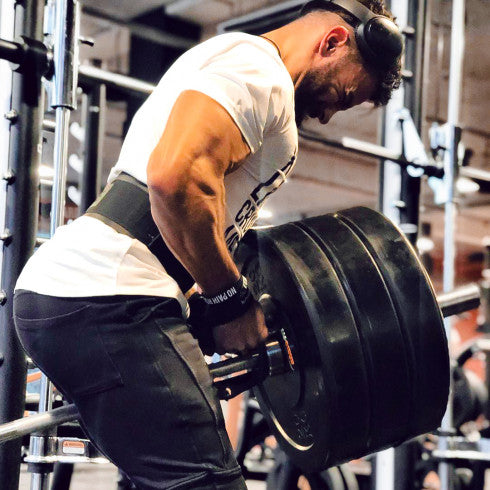 Training
TrainingSHOULD YOU USE A WEIGHT BELT FOR LIFTING?
The next person you see in the squat cage with 20 kg on the bar and a big belt, maybe you can make a comment after reading these few lines.
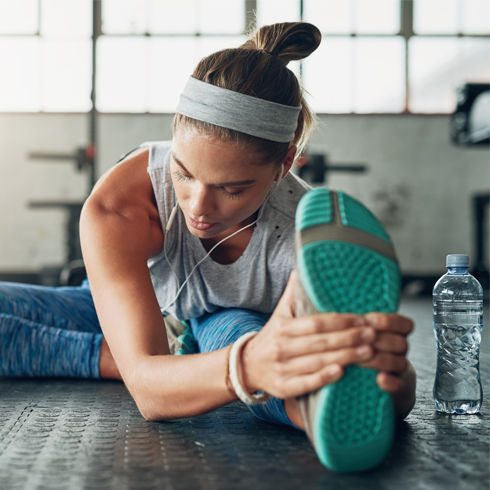 Our Tips
Our TipsHow to train flexibility?
The way to train flexibility is often highly controversial. Depending on the sports you practice, you work differently. A dancer and an athlete tra...
 Dietary Supplements
Dietary SupplementsWhy take turmeric?
There are hundreds and hundreds of spices with different properties and turmeric is obviously one of them! It is a spice that is generally quite we...
Which fat burner to choose?
To lose weight and burn fat, there is no secret: you have to do sport and take care of your diet. However, it is possible to speed up the process t...
 Our Tips
Our TipsFasting and sport: 9 tips for training during Ramadan.
Working out during Ramadan is not easy. Not eating from sunrise to sunset is a major challenge for athletes wishing to continue their activities. T...
 Our Tips
Our TipsSummer holidays: How to limit the damage?
On holiday, we often tend to let ourselves go. Unless you're a hardcore sportsman, you tend to abandon your trainers and indulge in a lot of dietar...
 Health
HealthHow to preserve your joints?
We have a total of about 400 joints located throughout the body. We therefore quickly understand why joint problems are quite common. You don't hav...
 Our Tips
Our Tips9 good reasons to do sport.
Sometimes the urge to exercise is not always there. And although we always tell ourselves that this year will finally be the right one to get back ...

